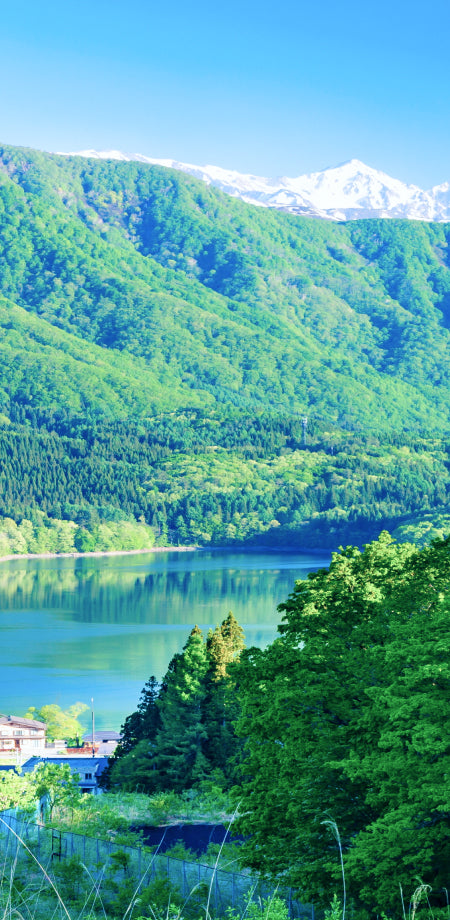投稿日:
更新日:
ShinshuSilk Story
Nagano Silk industry was the foundation of the prefectural industry
Raw silk was the largest export product from the beginning of the Edo period until the early Showa era, and the silk industry was one of the country's core industries. In 1872, the government-run Tomioka Silk Mill began operations, and five years later, in 1877, Nagano The prefecture has become the silk kingdom, boasting the highest production volume of both cocoons and raw silk in Japan.
One of the major factors is Nagano It was a suitable place for "sillicuria" where the prefecture produces cocoons. During the Edo period, sericulture industry began to develop in various parts of the prefecture, including Ina and Suzaka, mainly in the Ueda area, which was already one of the largest sericulture sites in the country, and in 1895 it accounted for about 21% of domestic production, and in 1912 more than 60% of farmers in the prefecture carried out sericulture. The mulberry fields that were opened for sericulture were gradually transformed into fruit fields centered around apples, and today's Nagano It is the foundation of prefectural agriculture.
Meanwhile, along with sericulture, "silver," which forms the two wheels of the silk industry, has also developed. At its peak, about 30% of domestically produced silk were produced. Nagano It was produced in the prefecture, and most of it was carried out by the Suwa and Okaya regions.ShinshuHow is the history of silk now woven? We visited Okaya City, the largest producer in Japan.

From the "Bird-Eye View of Okaya City" created by Yoshida Hatsusaburo when the city was established in April 1936, you can see how prosperity was at the time when silk mills lined up.
The birth of "Shito Okaya"
The Suwa Basin is located almost in the center of Honshu, with Mt. Yatsugatake in the east and the Southern Alps in the south, centering around Lake Suwa. Okaya City, located northwest of Lake Suwa, once boasted the world's largest production of raw silk exports, and was called "Itotsuokaya" in Japan and "SILK OKAYA" in overseas.
"Water is essential for the silk industry, so it is said that the silk industry cannot exist where there is no water. This area has abundant and high quality water for this purpose," says Takabayashi Chiyuki, director of the Okaya Silk Museum. The 31 rivers flowing into Lake Suwa gave water to boil cocoons. The good condition is that the thread is soft water that easily loosens. Furthermore, from the Tenryu River, which is based on Lake Suwa, we were able to obtain power to rotate the reel frames of reeling machines and other equipment by mounting a large powered waterwheel. There were also landing turbines to draw water into the factory.
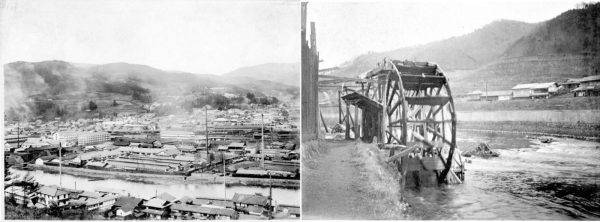
(Left) Silk mills lined up along the Tenryu River. (Right) Many waterwheels like this were installed in the Tenryu River.
Technological innovation is also underway. When the Suwa-style reeling machine was born in 1875, which incorporates the good points of both French and Italian styles, spread throughout the country, further increasing the fame of Itotsuokaya. Furthermore, in 1905, the National Railways Chuo Line connecting Hachioji to Fujimi was extended to Okaya to increase transportation capacity. The fuel coal and cocoons were transported, and Okaya's silk industry was further developed.
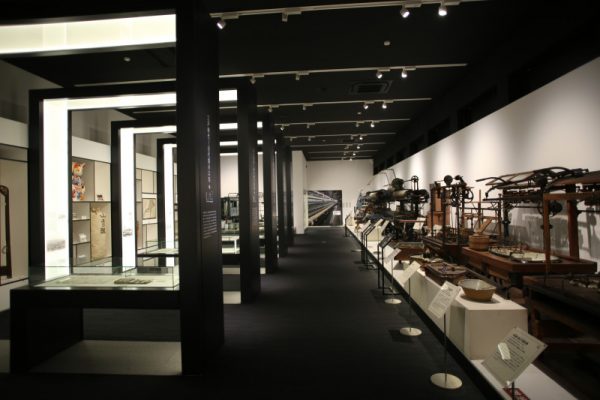
The Okaya Silk Museum displays various silk machinery as well as panels and materials that trace the history of silk.
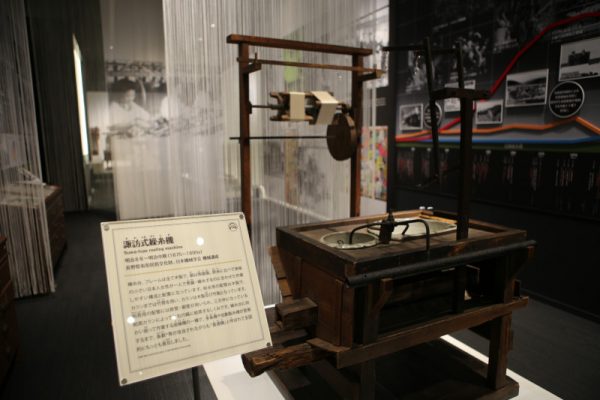
The Suwa-style reeling machine is designed to be easy for Japanese women to work together with the small size of boiled cocoons and reeling them by themselves.
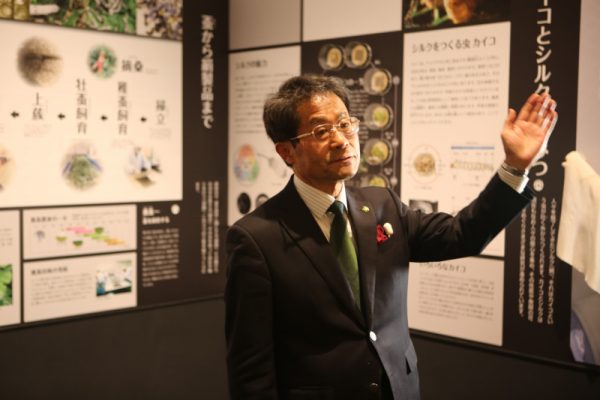
Director Takabayashi guides visitors around the building
"As much as environmental factors were, there was a huge presence. We must not forget the wisdom and talent of the business owners and financial industry, such as the Katakura family, as well as the power of many craftsmen, and many other hardships," continued Director Takabayashi.
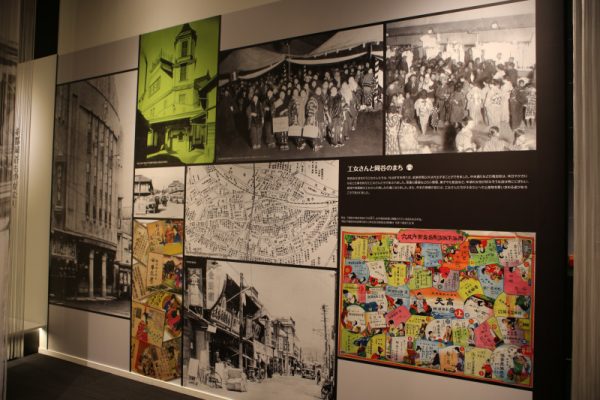
In 1930, Okaya's population was 76,500. Of these, 34,500 were female workers, or so-called craftsmen, from within and outside the prefecture to work in silk factories.
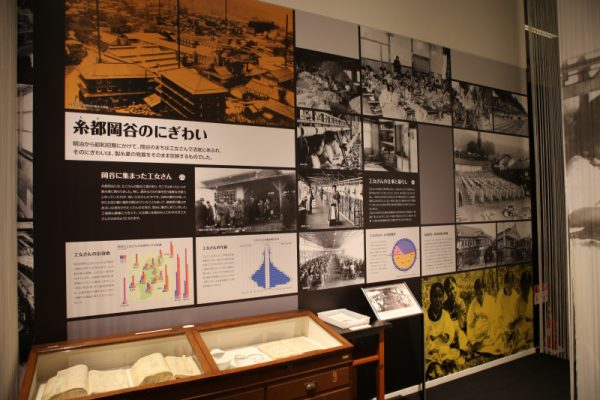
All three meals of the craftsmen were eaten in the factory, and as the ingredients were also considerable, many places made their own miso. Many silk factories have been converted to miso storehouses, and miso production is still popular in the Suwa area.
The present and future of silk silk
In the early Showa era, silk mills, which had 3,300 companies in Japan and 200 companies in Okaya City alone, have now finished their roles over time, and are now four companies nationwide (including ones). Nagano Only two companies in the prefecture are left. One of these, Miyasaka Silk Mill, founded in the city in 1928, is the only silk mill that continues to thrust by hand. It is currently operating in a form attached to the Okaya Silk Museum, allowing you to see up close the string pulling techniques using Joshu-style and Suwa-style thread reeling machines. Taking advantage of the fact that it is handmade, it is able to accommodate requests from dyeing and weaving artists, starting from small lots, and a variety of raw threads are still being drawn today.
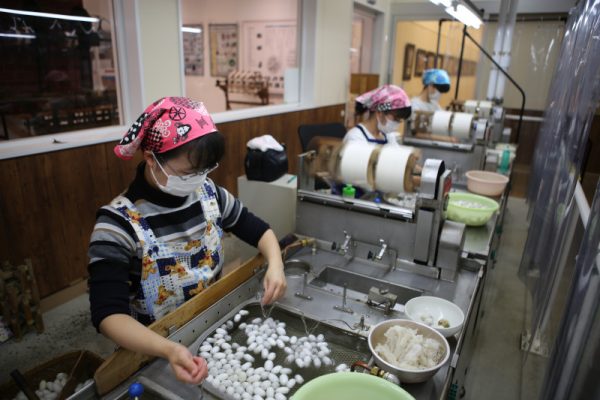
Miyasaka Silk Mold is the only silk mill in Japan where traditional raw silk production methods remain.
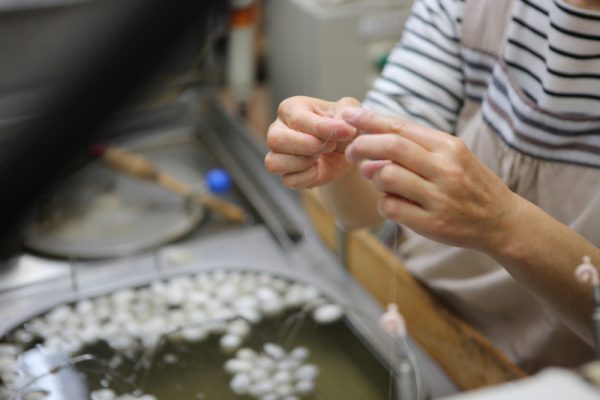
Using skilled techniques, we add the threads to make the threads even thicker.
Furthermore, we have developed thick, flat "galactic silk" with the desire to break away from the preconceived notion that it must be thin and uniform, and to create threads that are easy to reach that many people will be familiar with. Silk "silk fibroin" is also a soap that focuses on skin-friendly ingredients, and is also popular. "From around 1975, domestic kimono demand has suddenly decreased and the silk industry has become more severe, but looking at the world, silk production is growing. I think there will be many possibilities in the future," says Miyasaka Teruhiko, the second generation and current chairman of Miyasaka Silk Med.
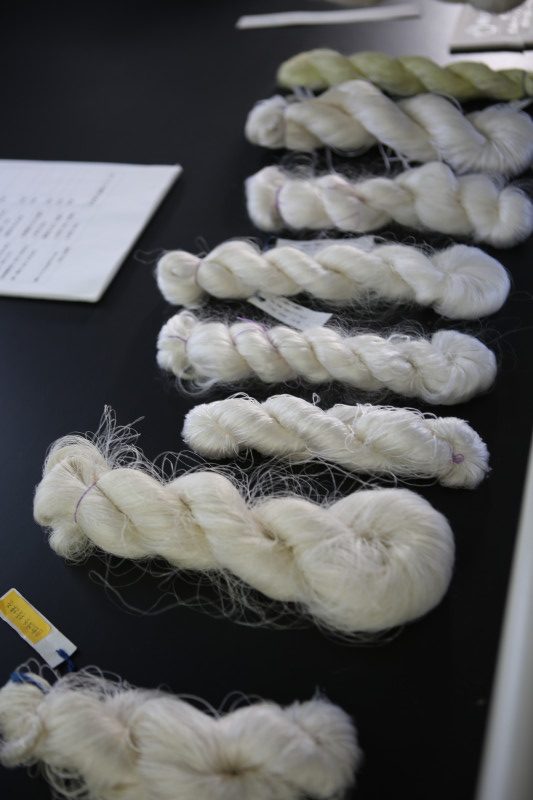
Various raw silks are made with different thicknesses and colors.
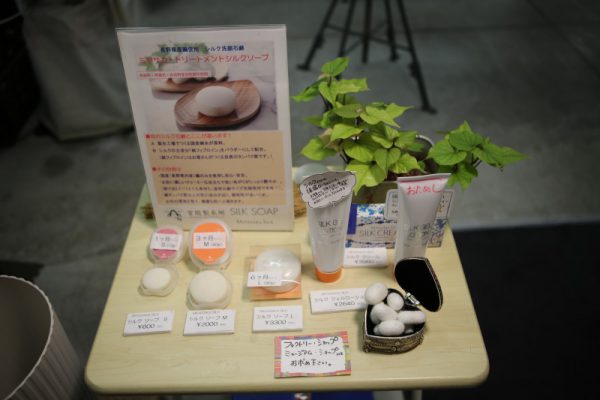
This soap is rich in silk ingredients and has a silky foam that is completely different from regular soaps.
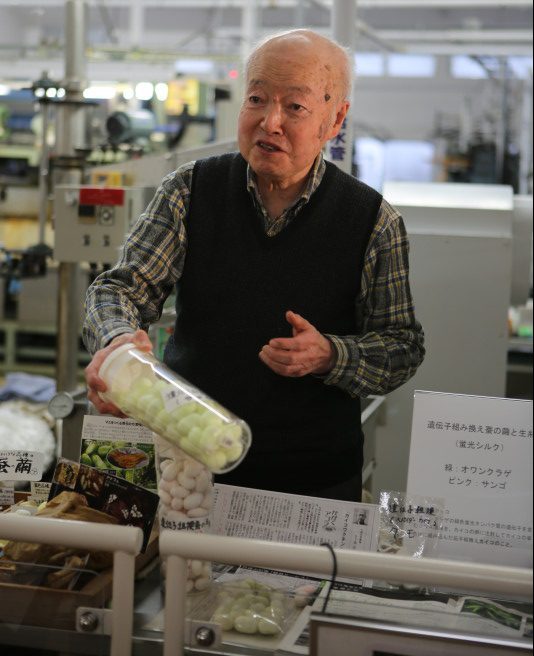
Chairman Miyasaka says he wants to take on new challenges while inheriting silk-making machines and techniques.
Many of the silk mills lined up on Lake Suwa have transformed into precision machinery industries, making use of their buildings, equipment, and manpower. The spirit of manufacturing cultivated in the silk industry has been established in this area and has remained a major source of roots. Nagano It continues to lead the prefecture's industry.
Reborn Okaya Silk
The former Yamaichibayashi Corporation Silk Office, which is also a nationally registered tangible cultural property. In a building filled with Taisho romance and allows you to feel the heyday of the silk industry, members of Okaya Silk Studio are working on silk production activities in an effort to inherit and evolve the tradition of silk fabrics.
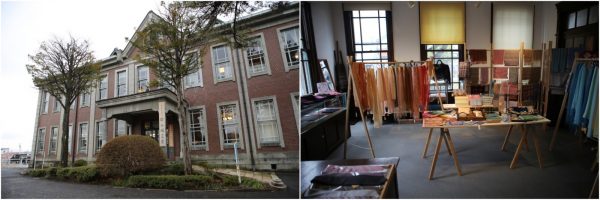
The former Yamaichibayashi Corporation Silk Office, built in 1921, is the base of Okaya Silk Workshop.
The workshop was established 20 years ago by the late Miyasaka Hirofumi, a textile designer who was the first Japanese to win the International Interior Design Award. His works have been widely recognized both domestically and internationally, including working on the interior decoration of famous hotels in Tokyo, and he also worked hard to revive traditional crafts such as Mincer weaving in Okinawa after the war. In my hometown of Okaya City, I have also created the foundation for the reconstruction of Okaya silk, creating Gobelin weave works that express patterns using only the weft threads.
Currently, Okaya Silk Studio produces silk products with a unique texture, hand-dyed and hand-woven. Products that make use of their high level of weaving techniques and rich expression are attracting attention.
The works will be sold at the annual workshop craft exhibition, and can also be purchased at nearby stores. We also accept orders from apparel and kimono shops. The experience of stole weaving, which is being carried out as part of its promotional activities, is also popular.
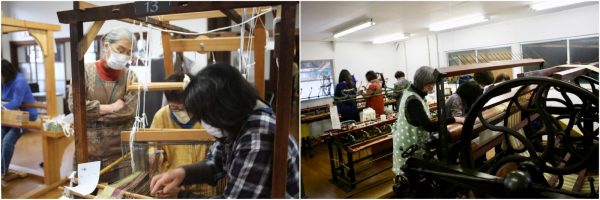
Okaya Silk Workshop produces products made with silk thread with a unique texture, made at Miyasaka Silk Mill.
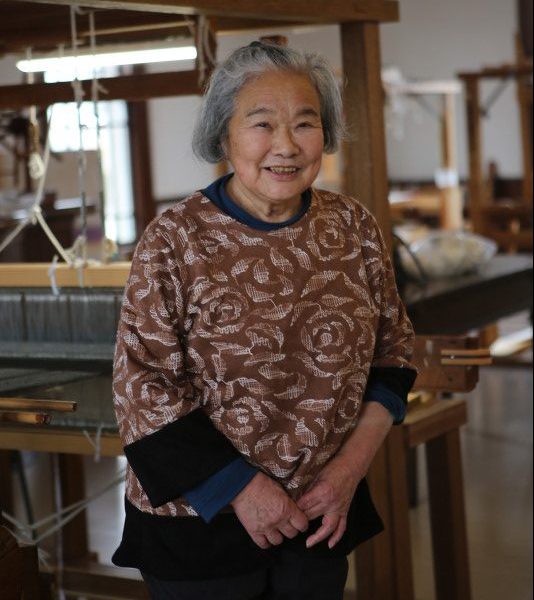
"At that time, it was a gathering of people who didn't really understand the thread and fabric, so I think it was difficult for the teacher," said Oyama Machiko, the representative who received guidance from Miyasaka.
Miyasaka's catchphrase was "creating an original, not imitating it." New products that meet this spirit are finally being born.
"Okaya is the world's number one silk town. That's why I wanted to create a real "Made in Okaya," where everything from sericulture to weaving is done in the city. And I want to tell the story of many of the silk lying in Okaya. With that in mind, I planned the "furoshiki" as the first part," says Sasaki Chirei, who is involved in the public relations and branding of Okaya Silk, a regional revitalization team. The owner of the silk mill has valued the craftsmen very much, and emphasizes that they have kept miso and silk products wrapped in furoshiki as souvenirs, and that they can be used for a wide range of purposes, such as eco-bags made of silk, lap blankets, and scarves. We also hope that by using it on a daily basis, you can feel the texture, sturdyness, and the texture of silk.
"I want to convey the charm of silk more from Okaya. I want you to come to Okaya to feel the charm of silk more. To that end, I would like to create a new silk culture from Okaya," says Sasaki.
Okaya Silk's pervert is just beginning.
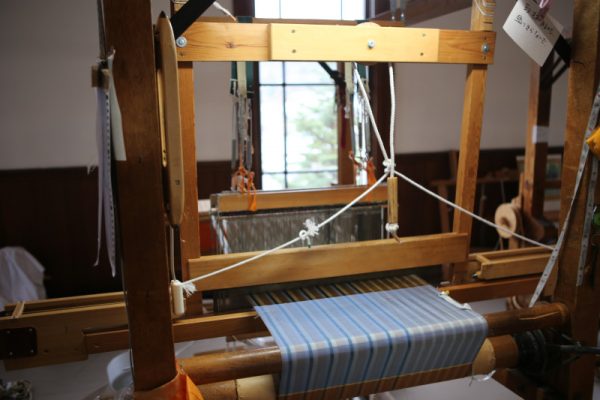
Furoshiki is undergoing prototypes such as pattern and thickness.
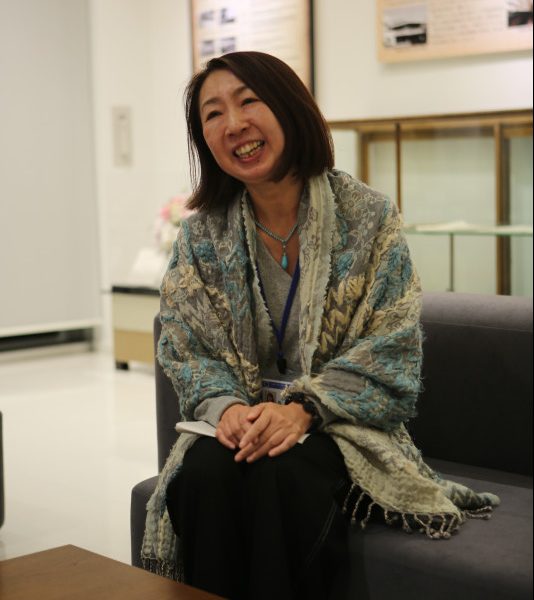
Sasaki, a regional revitalization team, wants to re-released Okaya Silk brand to the world
・Okaya Silk Fact Okaya
・Miyasaka Silk Factory
・Okaya Kinu Kobo
*This article is information as of January 2022. Please note that the products we carry may have changed.















